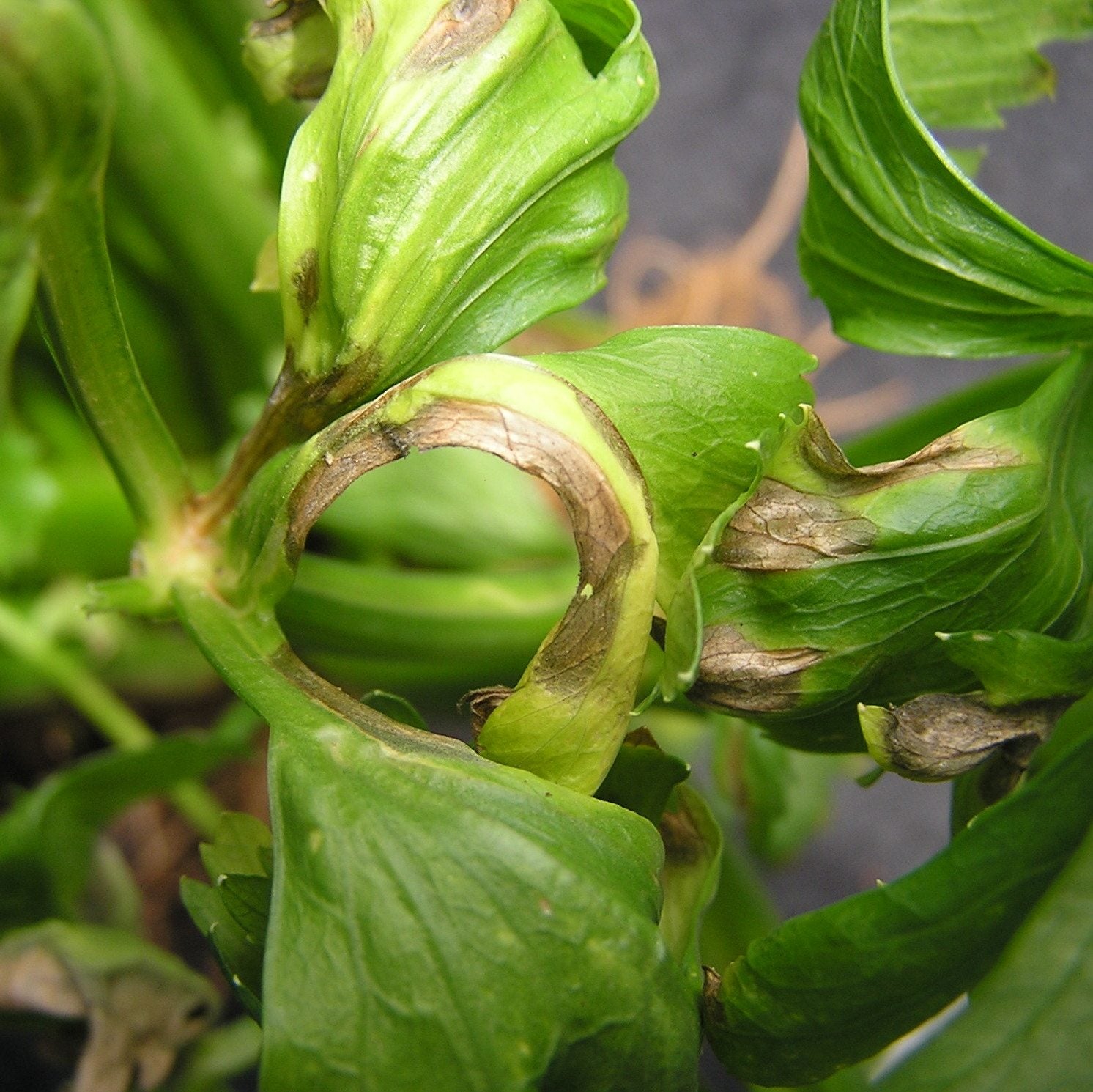Yellowing Celery Leaves: Why Is Celery Turning Yellow

Celery is a cool weather crop that requires plenty of moisture and fertilizer. This picky crop is susceptible to a number of diseases and pests which can result in a less than optimal harvest. One such malady causes yellowing of celery leaves. So why is celery turning yellow and is there a remedy that helps when celery has yellow leaves?
Help, My Celery Has Yellow Leaves
As mentioned, celery prefers cool weather, consistent irrigation, and plenty of nourishment. Celery thrives in a soil pH of 6 to 7 amended with lots of compost or well-rotted manure. Plants are finicky in that they need to be kept moist, but too much water or mounded wet dirt around the plants may cause them to rot. These delicate plants also like a bit of shade during the hottest parts of the day. Even with the most favorable conditions, celery is still prone to a number of problems that may result in celery with yellow leaves. If the foliage on celery turns yellow, it could be a nutritional deficiency, a pest infestation, or a disease. If your celery has yellow leaves, the plant may have a nitrogen deficiency. The symptom of yellowing leaves begins in the oldest leaves, first gradually affecting all foliage and resulting in stunted plants. Feed the celery with a fertilizer high in nitrogen to correct the imbalance.
Pests Causing Yellowing Celery Leaves
A number of pests may also plague your celery, resulting in yellow leaves. Aphids cause not only yellowing of foliage, but the leaves curl and become deformed. These tiny, yellow to green, pear-shaped insects suck nutrients from the underside of the foliage and leave behind their sticky excrement, or honeydew. Honeydew, in turn, may lead to black sooty mold. Try using a strong spray of water to blast the pests off or use an insecticidal soap. Wireworms, the larvae of click beetles, will also cause celery leaves to yellow and then brown from the bottom up. The plant’s growth is stunted, and it generally declines in health. The larvae live in the soil, so check prior to planting. If you see wiry-jointed worms, flood the soil. If you already have afflicted plants in the ground, remove them and the surrounding soil before attempting to replant.
Diseases Leading to Yellow Celery Leaves
If the foliage on your celery turns yellow, it may be the result of a disease. The three most common diseases afflicting celery are Fusarium yellows, Cercospora leaf, and celery Mosaic virus.
Fusarium yellows
Fusarium yellows of celery is caused by the soil borne fungus, Fusarium oxysporum. Commercial growers experienced staggering field losses from 1920 to the late 1950’s when a resistant cultivar was introduced. Unfortunately, a new strain appeared in the 1970’s. The fungus enters the plant through its root systems. The severity of the disease depends on the weather, specifically warm seasons combined with heavy wet soils, which can increase the number of spores in the soil. Symptoms are yellow leaves along with reddish stalks. The fungus may stay in the soil, dormant, for a number of years and then, given the right conditions, begin to re-colonize. This means that leaving the land to fallow doesn’t always work. Chemical controls show no promise either. If your plot is infected, try a two to three year crop rotation with onions or lettuce. Don’t use corn or carrots since the fungus will multiply in the root areas of these plants. Destroy any infected plants. Use resistant or tolerant celery plants if possible. To reduce the risk of introducing fusarium into the garden, sanitize tools and even shoes, remove any celery detritus, plant in well-draining soil, and keep the area weed free.
Cercospora leaf blight
Cercospora leaf blight infection results in irregular yellow-brown leaf spots combined with elongated blotches on the stalks. This fungal disease is spread by heavy rainfall along with warm temps. Keep the area weed free, as weeds harbor the fungal spores and avoid overhead watering, which spreads them.
Mosaic virus
Lastly, if you have yellow foliage on your celery, it might be Mosaic virus. Mosaic virus has no cure and is spread from plant to plant via aphids and leafhoppers. Destroy any infected plants. In the future, plant resistant varieties and remove weeds that serve as a haven for the virus.
Gardening tips, videos, info and more delivered right to your inbox!
Sign up for the Gardening Know How newsletter today and receive a free copy of our e-book "How to Grow Delicious Tomatoes".

Amy Grant has been gardening for 30 years and writing for 15. A professional chef and caterer, Amy's area of expertise is culinary gardening.
-
 Moody Blooms For Spring: 8 Types Of Black Flowers To Add Drama To Spring Displays
Moody Blooms For Spring: 8 Types Of Black Flowers To Add Drama To Spring DisplaysFrom midnight burgundies to inky violets, several types of black flowers can enrich and embolden a spring display. Try these brooding bloomers for a moody garden
By Tonya Barnett
-
 Can Snake Plants Live Outside? Everything You Need To Know For Snake Plants Al Fresco
Can Snake Plants Live Outside? Everything You Need To Know For Snake Plants Al FrescoSnake plants can live outside given the right conditions, but be careful that they don't take over! Learn the best way to use snake plants in your landscape.
By Mary Ellen Ellis